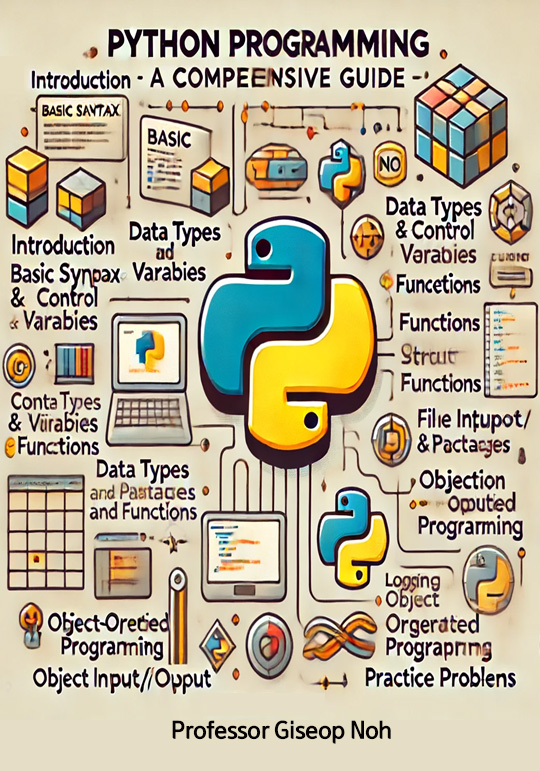상속
Contents
14.2. 상속¶
상속은 객체 지향 프로그래밍의 중요한 개념 중 하나로, 기존 클래스(부모 클래스 또는 슈퍼 클래스)의 속성과 메소드를 새로운 클래스(자식 클래스 또는 서브 클래스)에서 재사용할 수 있게 해줍니다. 상속을 통해 코드를 재사용하고, 클래스 간의 계층 구조를 정의할 수 있습니다.

Fig. 14.3 객체는 상속을 통해 부모의 모든 속성과 행동을
완벽하게 물려 받는다.¶
14.2.1. 기본 상속¶
부모 클래스의 모든 속성과 메소드는 자식 클래스에 의해 상속됩니다. 자식 클래스는 부모 클래스의 기능을 확장하거나 변경할 수 있습니다.
14.2.1.1. 예제: 기본 상속¶
다음 코드는 Animal 클래스는 부모 클래스이며, Dog와 Cat 클래스는 Animal 클래스를 상속받은 자식 클래스입니다.
Dog와 Cat 클래스는 speak 메소드를 구현하여 각각의 소리를 반환합니다.
# 부모 클래스
class Animal:
def __init__(self, name):
self.name = name
def speak(self):
raise NotImplementedError("Subclass must implement abstract method")
# 자식 클래스
class Dog(Animal):
def speak(self):
return f"{self.name} says Woof!"
class Cat(Animal):
def speak(self):
return f"{self.name} says Meow!"
# 객체 생성
dog = Dog("Buddy")
cat = Cat("Whiskers")
# 메소드 호출
print(dog.speak()) # 출력: Buddy says Woof!
print(cat.speak()) # 출력: Whiskers says Meow!
14.2.2. 메소드 오버라이딩¶
자식 클래스는 부모 클래스에서 상속받은 메소드를 재정의(오버라이딩)할 수 있습니다.
이는 자식 클래스에서 특정 메소드의 동작을 변경하고자 할 때 유용합니다.
14.2.2.1. 예제: 메소드 오버라이딩¶
다음 코드에서 Bird 클래스는 Animal 클래스를 상속받아 speak 메소드를 오버라이딩합니다.
class Bird(Animal):
def speak(self):
return f"{self.name} says Tweet!"
# 객체 생성
bird = Bird("Tweety")
# 메소드 호출
print(bird.speak()) # 출력: Tweety says Tweet!
14.2.4. 예제: super() 함수 사용¶
다음 코드에서 Manager 클래스는 Employee 클래스를 상속받아 __init__ 메소드와 get_details 메소드를 확장합니다.
super() 함수를 사용하여 부모 클래스의 get_details 메소드를 호출하고 추가 정보를 덧붙입니다.
class Employee:
def __init__(self, name, salary):
self.name = name
self.salary = salary
def get_details(self):
return f"Name: {self.name}, Salary: {self.salary}"
class Manager(Employee):
def __init__(self, name, salary, department):
super().__init__(name, salary)
self.department = department
def get_details(self):
return f"{super().get_details()}, Department: {self.department}"
# 객체 생성
manager = Manager("Alice", 90000, "HR")
# 메소드 호출
print(manager.get_details()) # 출력: Name: Alice, Salary: 90000, Department: HR
14.2.6. 예제: 다중 상속¶
다음 코드에서 C 클래스는 A와 B 클래스를 다중 상속받습니다.
따라서 C 클래스의 객체는 A 클래스와 B 클래스의 메소드를 모두 사용할 수 있습니다.
class A:
def method_a(self):
return "Method A"
class B:
def method_b(self):
return "Method B"
class C(A, B):
pass
# 객체 생성
c = C()
# 메소드 호출
print(c.method_a()) # 출력: Method A
print(c.method_b()) # 출력: Method B
